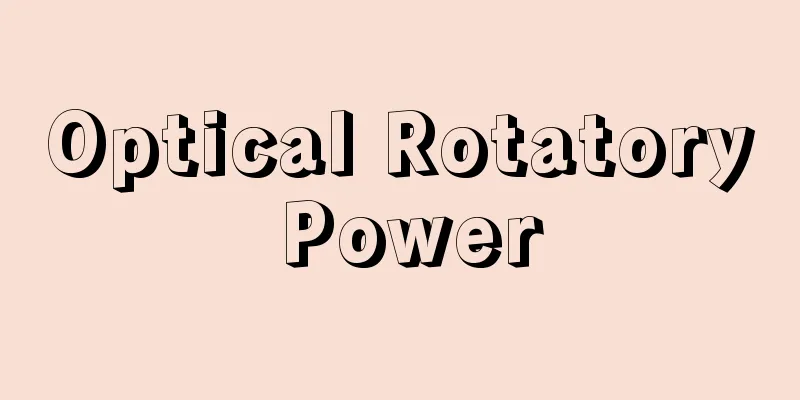Seiyu Honto (Seiyu Honto)

|
A conservative political party founded by Tokonami Takejiro's faction of the Rikken Seiyukai Party on January 29, 1924 (Taisho 13). After the assassination of Prime Minister Hara Takashi in November 1921, the Seiyukai Party experienced intensifying internal conflicts between the Takahashi faction led by President Takahashi Korekiyo and the Tokonami faction led by Tokonami, Nakahashi Tokugoro, and Motoda Hajime. When the Kiyoura Keigo Cabinet was formed in January 1924, the Takahashi faction joined forces with the Kenseikai Party and the Kakushin Club to launch the second movement to protect constitutional government, but the Tokonami faction supported the Kiyoura Cabinet, opposing universal suffrage, and 149 members left the party to form the Seiyukai Honto Party (Tokona became president on June 24 of the same year). The remaining Seiyukai party became the second largest party with 129 members. However, in the general election in May of the same year, it suffered a crushing defeat to the three conservative factions with only 109 members, and under the first Kato Takaaki cabinet, it reverted to being a minority opposition party. During the second Kato and Wakatsuki Reijiro Kenseikai cabinets, the party briefly allied with the Seiyukai, but when the Tanaka Giichi Seiyukai cabinet was formed in April 1952, in order to counter this, the party dissolved on June 1 and merged with the Kenseikai to form the Rikken Minseito. This led to an era of conflict between the two major conservative parties, the Seiyukai and the Minseito. [Junichiro Kizaka] “Junnosuke Masumi, History of Japanese Political Parties Volume 5” (1979, University of Tokyo Press) [Reference item] |Source: Shogakukan Encyclopedia Nipponica About Encyclopedia Nipponica Information | Legend |
|
1924年(大正13)1月29日立憲政友会床次竹二郎(とこなみたけじろう)派が結成した保守政党。1921年11月原敬(はらたかし)首相暗殺後の政友会は、高橋是清(これきよ)総裁らの高橋派と床次・中橋徳五郎(なかはしとくごろう)・元田肇(もとだはじめ)らの床次派との内部対立が激化していた。24年1月清浦奎吾(きようらけいご)内閣が成立すると、高橋派は憲政会、革新倶楽部(くらぶ)と提携して第二次憲政擁護運動に立ち上がったが、床次派は普通選挙反対を唱えて清浦内閣を支持し、149名が脱党して政友本党を結成した(床次の総裁就任は同年6月24日)。残留組の政友会は129名で第二党となる。しかし同年5月の総選挙で109名と護憲三派に惨敗し、第一次加藤高明(たかあき)内閣のもとで少数野党に転落した。第二次加藤、若槻礼次郎(わかつきれいじろう)両憲政会内閣時代には一時政友会と提携したが、27年4月田中義一(ぎいち)政友会内閣が成立すると、これに対抗するため、6月1日解党と同時に憲政会と合同し、立憲民政党を結成した。その結果、政友会、民政党による保守二大政党対立時代が出現した。 [木坂順一郎] 『升味準之輔著『日本政党史論 第五巻』(1979・東京大学出版会)』 [参照項目] |出典 小学館 日本大百科全書(ニッポニカ)日本大百科全書(ニッポニカ)について 情報 | 凡例 |
<<: Sheng-yu guang-xun; Shêng-yü kuang-hsün
Recommend
Paper Capacitor
A type of capacitor (electrical storage device) u...
Harvesting and binding machine - karitori kessokuki
…It can also refer to a binding tool for newspape...
East Japan Railway Company - East Japan Railway Company
Founded in 1987 with the division and privatizatio...
Horakuin - Black Inn
Located in the southern part of the Daidairi of t...
Inada Gobo - Inada Gobo
Another name for Saienji Temple in Inada, Kasama C...
Peking Duck - Peking Duck
A famous Beijing dish called Kao Yaz, which is mad...
Culture film
Grierson established the foundation of this movem...
Ecchu loincloth - Ecchu loincloth
...It also says that people who appreciate beauty...
Cheyenne - Cheyenne (English spelling)
A North American Indian tribe. They are also known...
Sasagoi (English spelling) green-backed heron
A bird of the Heronidae family in the order Ciconi...
Kan'ami Kiyotsugu
→ Kan'ami Source: Shogakukan Encyclopedia Nip...
Tsugishikishikishi
A fragment of a collection of poems copied in the...
Earth Child - Jisi
〘Noun〙① Rent for public fields during the Nara and...
Halt loss
...This type of person can also be found in vagra...
Fudai daimyo - Fudai daimyo
One of the daimyo classifications in the Edo peri...









